Introduction to After Effects
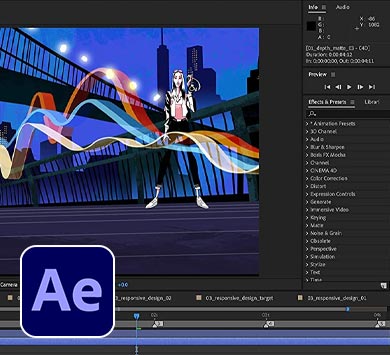
Adobe After Effect is a powerful software package for creating digital visual effects, motion photography and compositing. This tool was developed by Adobe Systems. People make and consume movies, TV shows and internet content. After Effects has become a must-have for professional creative professionals around the world.
To understand the basics of After Effect
What is After Effects?
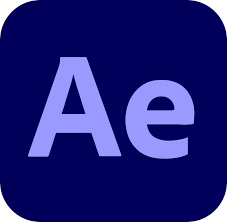
After Effect is software for creating digital visual effects and motion pictures. It helps create complex graphics, animations, and video production background effects. This is different from Adobe Premiere Pro for video editing. After Effect focuses on complex visual treatments and graphic design.
Key Features of After Effect
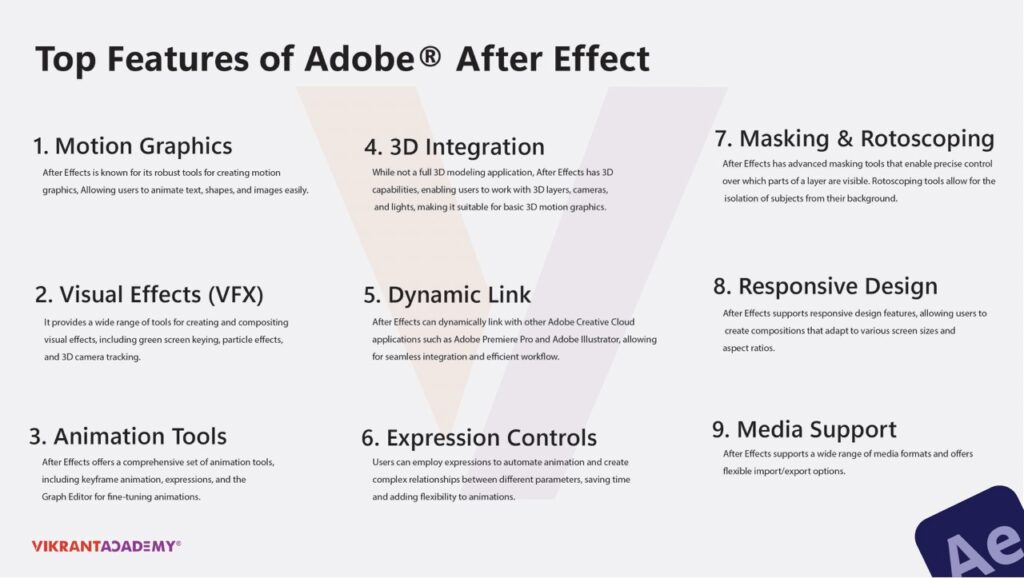
After Effects stands out in making lively motion graphics that breathe life into visual content. Designers can move text and graphic elements , build complex animated infographics, design eye-catching title sequences for films and videos, and create animated logos and brand identities that pop. It also has powerful visual effects letting users blend multiple video layers , apply green screen and chroma key effects, and add detailed particle systems with environmental effects. What’s more, the software lets you create realistic camera movements and 3D simulations that give depth to projects. A key part of After Effects is keyframe animation, a basic technique that gives designers exact control over many aspects of motion. From object movements to property changes and shifts in visual elements over time and space keyframe animation allows for unmatched customization and smooth transitions making After Effects a top choice for professionals in the creative field.
Workflow and Interface
Workspace Overview
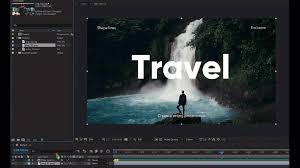
In Adobe After Effects, a workspace is comprised of the subsequent important panels:
Panel of Projects
Manages all the content and assets needed
Organizes compositions and imported resources into a media folder
Facilitates easy tracking and management of project elements
Composition Panel
The panel provides space specifically intended for working on the visual matter
Real-time preview of animations and effects
Facilitates direct manipulation of visual elements
Timeline
Animation sequences can be composed here
Layer attributes and keyframes can be managed
Provides timely and precisely timed synchronization of visual elements.
Essential Workflow Techniques
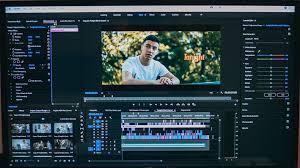
Property Import and Planning
Proper asset management is important in After Effects. Professionals recommend:
Using a consistent naming scheme
Organizing files in organized folders
Using the Media Browser for simple imports
Maintaining high resolution sources
level management
Effective level management includes:
Understanding the level hierarchy
using mixing modes
Using variable positions
masking and tracking complex compositions
Advanced technology
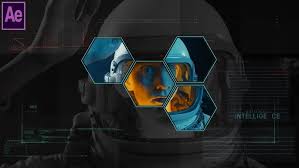
Movement control
Motion tracking allows for seamless integration of visual elements in live production. Key steps will include:
tracking point detection
Setting tracking parameters
Stabilization or match-moving scenes
To use tracked data on other layers
words and texts

It supports JavaScript-based syntax for After Effects:
Automation of repetitive tasks
Complex animations
Development of structural kinematics
increased business planning
interpretation and derivation
Explain the plan
It’s important to understand render settings to maintain visual control:
Selection of appropriate outputs
Developing a pressure system
Managing the render queue
Render time optimization
Export Options
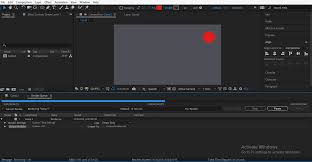
After Effects offers multiple export configurations:
- Video formats (MP4, MOV)
- Image sequences
- Web-optimized content
- Broadcast-ready specifications
System Requirements
To run After Effects efficiently, consider:
- High-performance CPU
- Dedicated GPU
- Minimum 16GB RAM
- Fast SSD storage
- Color-calibrated monitor
Performance Tips
- Utilize preview RAM cache
- Implement render proxies
- Optimize project file management
- Regularly update software and drivers
Learning and Resources
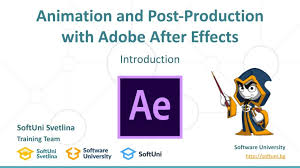
Skill Development
- Online tutorials
- Adobe Learn platform
- Community forums
- Professional training courses
Certification
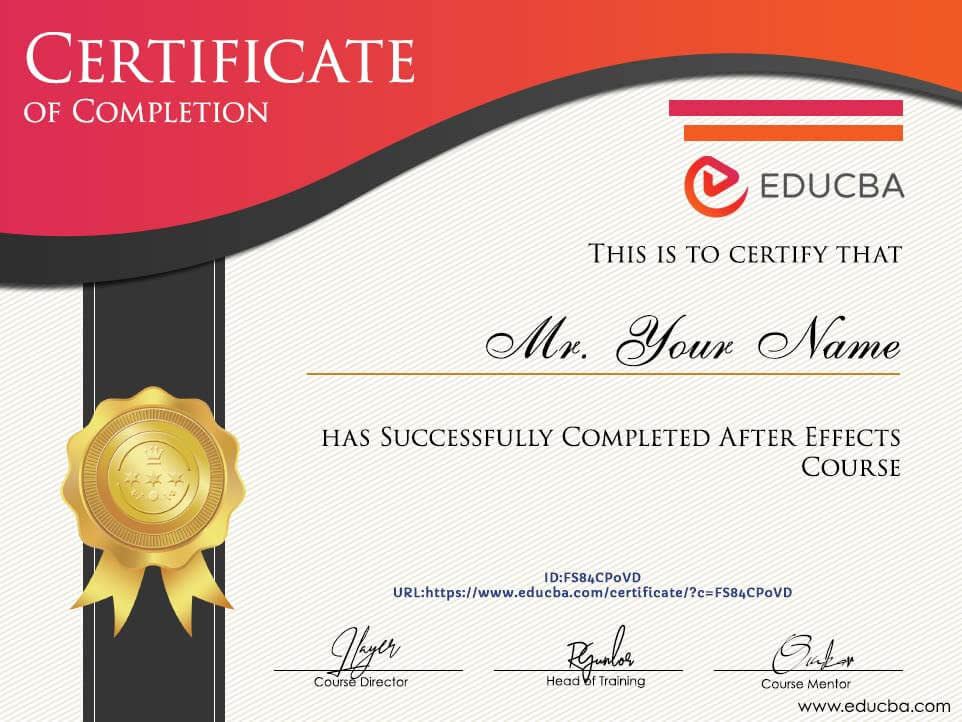
Adobe offers professional certification in After Effects, which is an incredible method to ensure your comprehension and capability of this perplexing application. Becoming an Adobe Certified Expert (ACE) demonstrates your skill in the utilization of movement designs and picture creation impacts and covers off. This sort of accreditation is broadly perceived, and will indicate likely businesses you can work with certainty and polished skill on their top of the line ventures, it’s particularly significant whether or not you’re a fashioner, photograph editorial manager or movement illustrations compositor encountering a workforce loaded up with capable keen laborers.
To set yourself up for confirmation survey essential high Movements in be consequences are Adobe effects Essentials effectively activities tool gonna other furthermore get adobe also tests look at what might be compared to one massive helpful. Getting ensured won’t just give more validity; by guaranteeing industry norms as best practices underlie each activity alongside development plus neglects.
Conclusion

Adobe After Effects is the industry standard for motion graphics and visual effects artists for a reason. It offers a vast and powerful suite of tools that can take your projects to the next level of perfection and professionalism. From compositing multiple images into a single frame to creating video wall-style background videos, After Effects does it all when it comes to multimedia. Compositors use After Effects to create convincing (or unbelievable) realism by combining footage of people with 3D backgrounds or virtual sets. If you’re just starting out in the world of visual effects and motion graphics, one cool feature of this software is its built-in tracker—learn how to use this very handy feature while experimenting with simple mask tracking or screen replacements.
After Effects has literally been used on thousands of films since its inception in 1995. A few notable examples are The Lion King (for game changing hand-drawn/CGI animation composite scenes), Titanic, Star Wars Episode II: Attack Of The Clones (for VFX—fly little Anakin!), Iron Man 1 & 2, Inception (yes—a spinning hallway was not actually built), Scott Pilgrim Vs The World, Tron Legacy… I could go on but my hands may start bleeding at any moment.
